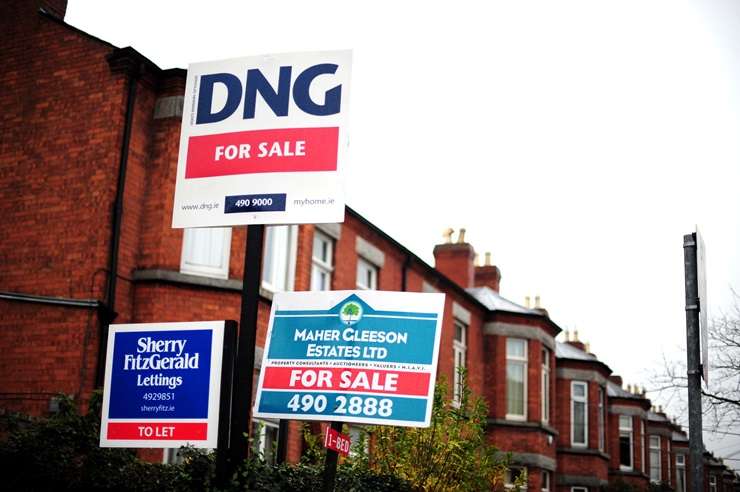ANALYSIS: How do you spot a housing market crash before it happens? Across 2000 years of economic data, one pattern from boom and busts shows up time and time: Prices suddenly climb, the banks turn off the lending taps, buyers disappear, and prices drop like a brick.
The history of house price crashes is worth looking at, especially in light of the economic challenges facing New Zealanders today. The country’s housing market is slowly moving on from the post-Covid boom that saw prices jump by almost 40% and the subsequent slowdown, which saw prices fall between 10% and 25%.
I’ve looked at the seven largest house price crashes in history to see what factors were at play and what modern homeowners can learn.
Start your property search
The Great Depression
US house prices took off in the roaring 1920s. The country had put the horrors of the First World War behind it, workers were earning more money, mortgages were easy to get, and cities were expanding.
Then the stock market bubble burst. People who borrowed money to buy stocks they didn’t understand panicked as prices dropped and the market collapsed. People defaulted on their mortgages, and the banks stopped lending. Between 1929 and 1933, American house prices fell by around 35%, and a quarter of workers lost their jobs.
Key lesson: Watch the jobs market. People stop buying houses when unemployment is out of control.
Ireland’s Property Collapse
Ireland’s economy was flying in the early 2000s. Funding from the European Union poured in, home loans were easy to obtain, and construction was booming.
But then in 2008, global banks caught in the sub-prime mortgage scandal collapsed or teetered on the edge of disaster. As the global financial crisis took hold in Ireland, banks stopped lending. No one could buy the thousands of new homes that had sprung up during the boom, and developers defaulted. Irish house prices fell by 56% as a result.

For sale signs in the Irish capital of Dublin in 2011. Photo / Getty Images
Key lesson: Keep an eye on the supply of new builds and credit flows. Excess supply can become a deadly anchor if no one is lending.
Hong Kong’s ‘Handover’ Crash
In 1997, the UK handed Hong Kong back to China. People thought Hong Kong was all set for a new economic boom, so they rushed to buy property in the city, pushing prices up.
Then the Asian Financial Crisis hit. Countries that had borrowed a lot of US money couldn’t afford to repay. Investors panicked and pulled their money out of the region, leading to collapses in currencies and the stock markets.
Discover more:
- Ed McKnight: Can tenants damage their rental and still get their bond back?
- They want the ugliest homes: 16 offers in five days for tired rental
- Auckland's new CVs: Homeowners face 9% drop but do valuations really matter?
As a result of all this, interest rates soared in Hong Kong and mortgage repayments doubled. Sellers were forced to cut their prices, and over six years, home values in Hong Kong dropped by 61%.
Key lesson: Keep an eye on interest rates. As we’ve seen in New Zealand, a sudden spike in mortgage costs can crush homeowner finances.
Amsterdam’s Slow Crash
In the early 1700s, Amsterdam was the trading capital of Europe. Wealthy businessmen trader speculated on canal houses, often buying them just to flip them for profit. Eventually, reality caught up. Rents weren’t rising, and population growth slowed. There wasn’t a dramatic collapse – just a long, steady loss of confidence. The market quietly unravelled over 37 years, with some historians estimating a fall of around 66% in the city’s house prices.

Opes Partners economist Ed McKnight: "When the banks tighten up, prices tumble." Photo / Fiona Goodall
Key lesson: If people are buying homes based on price momentum, not market fundamentals like rental growth, then prices will turn.
Japan’s Lost Decade
Japan’s economy in the 1980s was hot. Banks lent aggressively, and the price of real estate in Tokyo soared (it was said that the ground under the Imperial Palace in the city was worth more than all homes in California combined).
In 1989, the Bank of Japan raised interest rates to cool speculation. Buyers couldn’t afford the loans needed to keep house prices high, and so property values fell. Over the next decade, Tokyo land values fell by as much as 80% as Japan’s economy stagnated.
Key lesson: Extended periods of stagnation can wipe out any wealth tied up in property.
An Ancient Roman Crash
Land was the investment of choice for Rome’s elite during the early imperial period. Senators during the reign of Emperor Tiberius (AD 14 to 37) borrowed heavily to buy estates and display wealth, and as a result, property prices soared.

Remains of the Temple of Saturn in the Roman Forum. During AD 33, the city saw land values drop by around 70%. Photo / Getty Images
But then, in AD 33, the Government stepped in. The Roman Senate passed a law that meant banks had to own more land in Italy. However, the banks couldn’t afford it and called in their loans. Most couldn’t afford to repay, so there was a mass sell-off.
There wasn’t good house price data back then, but some historical accounts suggest that prices may have crashed by around 70%.
Key lesson: When the banks stop lending, and everyone becomes a seller, house prices will fall rapidly.
The Black Death Crash
Before the plague, Europe’s population was growing, cities were bustling, and land was valuable. Then the Black Death struck, and up to 50% of the continent’s population died. Entire villages vanished, demand for housing collapsed, and land values fell by as much as 80%.
Key lesson: Pandemics and warfare can upend economies and nation states as much as financial mismanagement. Always account for the unexpected.
Nobody wants the value of their house to fall 80%, but there is light at the end of the tunnel in many of these stories. Today, US house prices are roughly 74 times what they were before the Great Depression. And Irish house prices have recovered since the GFC. When the banks tighten up, prices tumble, but time, not timing, is a homeowner’s greatest ally.
- Ed McKnight is the economist at property investment company Opes Partners















































































